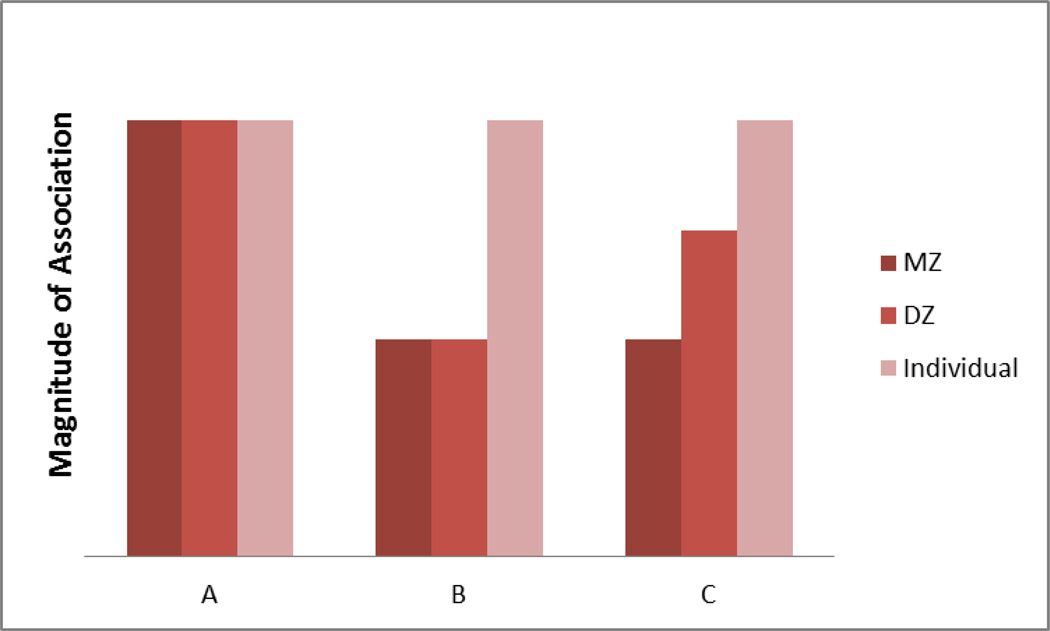Figure 2.
Interpretation of three possible co-twin control result patterns. If the association between conscientiousness and a health outcome were the same at the individual level, among MZ twins discordant on conscientiousness, and among DZ twins discordant on conscientiousness, it would suggest an environmentally mediated causal link between predictor and outcome (Scenario A). If the association were observed at the same level within discordant MZ twin pairs and within discordant DZ twins but at a greater magnitude at the individual level, it would indicate that family factors (both genetic and environmental) may account for the association between predictor and outcome (Scenario B). If the association was greater at the individual level, weaker within discordant DZ twins, and weaker still within discordant MZ twins, it would suggest that unmeasured genetic factors may account for the association between predictor and outcome (Scenario C).

